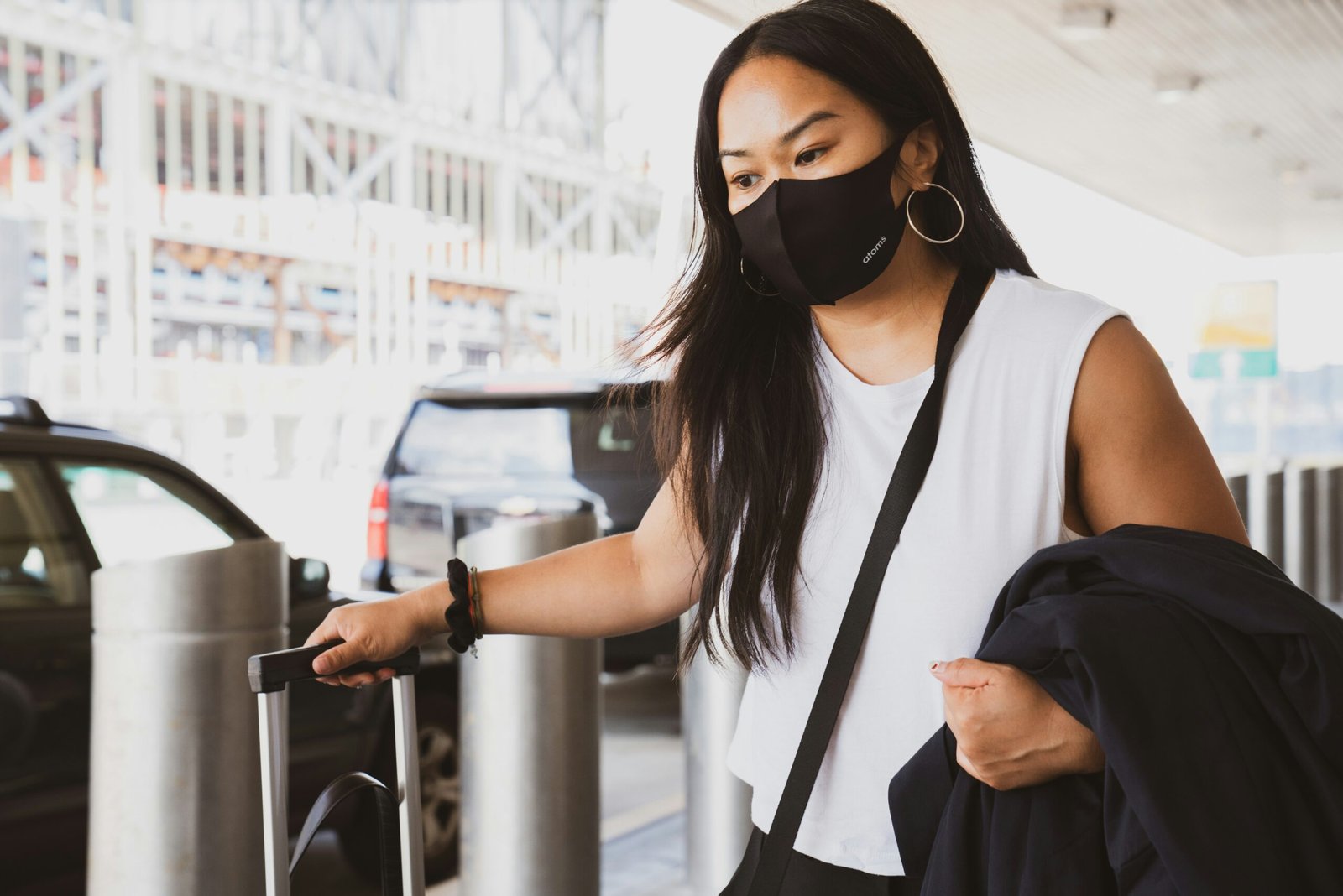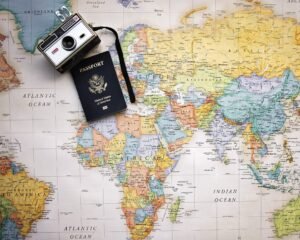
Solo Travel Safety Tips
Understanding Personal Safety when traveling solo
There is always a mix of excitement and uncertainty for the adventurous explorer wishing to embark on their first solo travel encounter. One of the crucial aspects of ensuring an enjoyable experience is mastering personal safety. There are various practices that can help enhance your safety and allow for a fulfilling adventure. First and foremost, being conscious of your surroundings, including the behaviors of those around you, can alert you to any potential threats. https://asavvyhouse.com/wp-admin/post.php?post=12&action=editRegularly assessing your environment enables you to make smart decisions about where to go and what to do.

Moreover, trusting your instincts is essential for personal safety. If a particular location or situation feels uncomfortable, it is essential to remove yourself from that situation as soon as possible. Often, your intuition is a reliable guide, and adhering to it can prevent unwanted incidents. Additionally, sharing your travel itinerary with trusted friends or family members serves as an extra layer of security. By providing them with your plans and check-in times, someone will always be aware of your whereabouts, which can be crucial in emergencies.
Maintaining a low profile is another effective strategy. Avoid drawing attention to yourself as a tourist by dressing inconspicuously and remaining aware of local customs. Steer clear of risky areas known for high crime rates, especially at night. Prior research on destinations can help you identify such zones. Finally, always ensure that you stay connected. Carry a fully charged mobile phone, and familiarize yourself with local emergency numbers. Downloading useful apps can also assist in navigating your surroundings, finding safe transportation, or quickly reaching out for help if needed are great ways to increase your solo travel safety. https://www.vfsglobal.com/en/individuals/travel-insurance.htmlEmpowering yourself with knowledge and practicing vigilance can significantly enhance your personal safety while traveling solo.
Solo Travel Safety: Navigating Your Journey
Embarking on a solo travel adventure necessitates thorough preparation with respect to safety measures. Firstly, extensive research on your intended destination is advisable. Understanding the local culture, customs, and laws not only facilitates smoother interactions but also aids in avoiding unintentional offenses. It is paramount to familiarize yourself with common scams and areas to avoid, as this knowledge can greatly enhance your overall safety while exploring new locales.

Integrating technology into travel planning can further bolster safety. Numerous travel safety apps are available that provide real-time alerts, emergency contacts, and local information. These applications can be invaluable resources, equipping travelers with essential tips and tools to navigate unfamiliar environments with confidence. Additionally, sharing your itinerary with family or friends can serve as an extra layer of security, ensuring someone is informed of your whereabouts at all times.
Transportation options also play a crucial role in ensuring safe travel. While using ride-share services, always opt for verified platforms and compare the driver’s information and vehicle. Public transport can provide an economical alternative, but it’s essential to remain vigilant, especially during peak hours. Choose well-lit and populated areas for boarding and disembarking, as this reduces the risk of encountering problematic situations.

Moreover, safeguarding your belongings is crucial during your journey. Utilize anti-theft bags, keep valuables close, and avoid excessive display of cash or expensive items. When it comes to managing money, use local ATMs in secure locations and consider carrying a travel card to minimize the amount of cash on hand. This strategic approach to cash management ensures efficient spending without unduly complicating your travel experience.
In conclusion, adopting these safety practices will empower adventurous explorers to navigate their journeys with greater assurance, allowing for enjoyable experiences devoid of unnecessary risks.
Hotel Safety: Choosing and Securing Your Accommodation
When embarking on a solo travel adventure, selecting the right accommodation is necessary for your safety and peace of mind. Ensure you do careful research to identify hotels or lodgings that prioritize guest security. Review online platforms dedicated to traveler feedback to provide insights into a hotel’s safety reputation. Look for comments and reviews about property safety, cleanliness, and staff behavior.
Location is another key factor when selecting accommodations. Always choose hotels situated in well-lit, populated areas, preferably not far from local attractions or public transportation routes. Avoid isolated areas not only for your safety but also for easier access to essential services like restaurants and emergency assistance if needed. Pay attention to the overall neighborhood atmosphere and its reputation for safety.

Assessing the security features of a hotel can further bolster your sense of safety. Look for properties equipped with key card access systems, which restrict entry to unauthorized individuals. Additionally, hotels with surveillance cameras in common areas can provide an extra layer of security. Inquire about front desk services—establishments that offer 24-hour reception staff can attend to any safety concerns promptly.

Once you have selected your accommodation, securing personal items is crucial. Utilize the hotel’s safe for keeping valuable belongings such as passports, cash, and electronics. If a safe is not available or you prefer extra precaution, consider keeping important items on your person in a concealed money belt or an under-clothing wallet. This practice not only minimizes the risk of theft but allows you to maintain peace of mind while exploring your destination and will help to ensure your solo travel safety.
By making informed decisions on accommodation and employing proactive safety measures, solo travelers can significantly reduce risks and enhance their overall experience during their adventures.
Making Smart Choices About People and Transportation
When traveling solo, making informed decisions regarding interactions with people and transportation is crucial for ensuring personal safety. Engaging with new individuals can lead to enriching experiences, but it is essential to remain vigilant. Recognizing red flags in interpersonal interactions can help prevent potentially dangerous situations. For example, if someone appears overly aggressive or ignores your boundaries, it is advisable to distance yourself and trust your instincts. Being aware of your surroundings can significantly influence your safety throughout your travels.
When it comes to transportation, solo travelers should prioritize safe and reliable options. Using verified taxi services or reputable rideshare apps is often safer than accepting rides from strangers. These services typically have established protocols for ensuring passenger security, making them a preferable choice for solo adventurers. Always confirm the vehicle and driver details before entering the car.
While utilizing public transportation, such as buses or trains, it is essential to stay alert to your environment. Keep an eye on your valuables and remain cautious about your personal space, especially during peak hours when crowds can be overwhelming. Additionally, keeping your mobile device charged is vital for accessing maps and emergency contacts. Familiarizing yourself with local emergency numbers beforehand can provide peace of mind as well.
Ultimately, solo travel can offer unforgettable experiences when approached with diligence and care. By recognizing the importance of solo travel safety, making smart choices about people and transportation, you can minimize risks and fully embrace the adventures that await you. Engaging with locals can be greatly rewarding when guided by a clear understanding of solo travel safety protocols and instincts.






